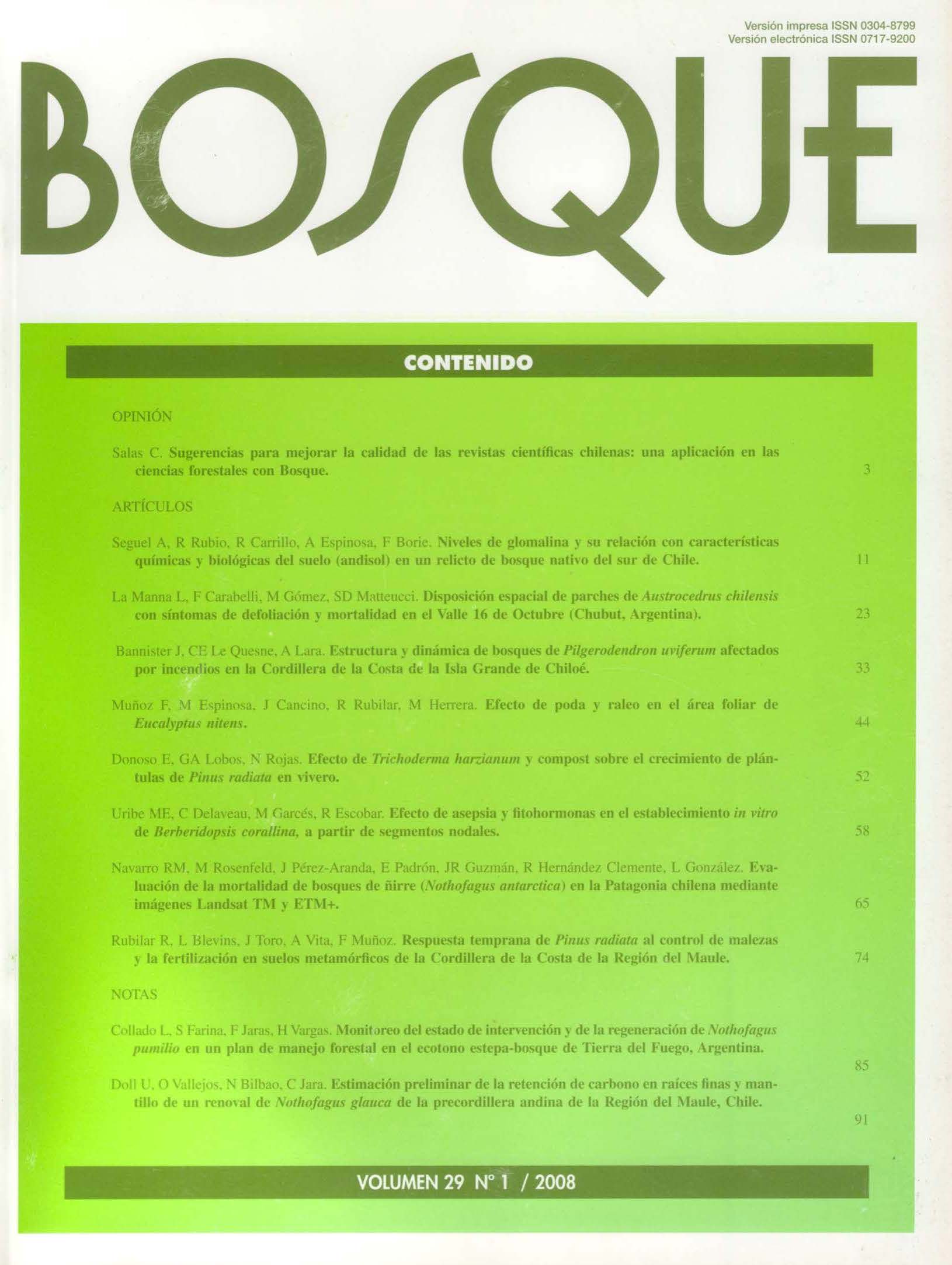Main Article Content
Apr 30, 2008
Abstract
In the experimental station “El Picazo” located in the Andes of Maule Region, the quantification of carbon retention by a “RobleHualo” native forest was started. Ten adjacent plots of 1,000 m2 were located in a young forest dominated by Nothofagus glauca, whose basal area and Dg were 10.8 m2 and 12.3 cm respectively. Five systematic sampling points were defined in each plot, where litter was sampled with a frame of 0.25 cm, and cylinder-shaped soil samples of 4.5 cm in diameter were extracted down to 5, 10 and 20 cm of the profile. Litter was separated into leaves and branches, and soil samples were washed to separate the roots and classify them into fine roots (≤ 2 mm) and medium roots (> 2 mm). An accumulation of 12.47 ± 4.08 Mg ha-1 of litter was determined, where leaves doubled the branch weight. A root-biomass of 20.99 ± 10.24 Mg ha-1 was found in the upper 20 cm of the profile. While the fine roots decreased exponentially with depth, the medium ones were distributed uniformly through the soil profile. The carbon retention was estimated to reach 14.72 Mg ha-1, equivalent to 53.97 Mg ha-1 of not emitted CO2


